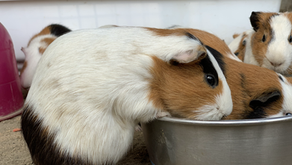Housing the House Sparrow
- Anoushka Puljal

- Jun 27, 2021
- 2 min read
The population of the House Sparrow, scientific name Passer domesticus, has been declining in urban India for some time now. Although, its conservation status according to the IUCN Red List is “Least Concern”, people in major cities such as Delhi have noticed the significant drop in the number of sparrows sighted. The main reason for their decline is rapid gentrification caused by urbanisation of areas. Gentrification is the process by which cities develop significantly and incorporate new technology and infrastructure leading to commercial development. But how does this affect sparrow population?
When cities are gentrified, new buildings replace older ones. These older building are major nesting sites for house sparrows. Though they are a relative of the weaver bird, sparrows don’t build intricately woven nests but prefer shanty ones, built of grass, old wires, strings, etc. which are usually located in the crevices of old brick buildings and crumbling old structures. These nests help keep them hidden from predators such as the House Crow, latin name Corvus splendens. They also don’t stand out and avoid unwanted attention of such predators. Now, with the old buildings being demolished and new building being introduced, these potential sparrow nesting sites are disappearing. Newer buildings with smoother concrete and glass exteriors have stronger infrastructure, less susceptible to cracking and giving way. Insufficient number of places for nesting of the house sparrow caused by gentrification is, therefore, a major reason for their decline in urban India.
Secondly, due to urbanisation, natural vegetation has been becoming increasingly scarce. Specifically, there has been a major reduction of shrubbery. Shrubs are necessary for the survival of sparrow fledglings who use them as a protective shield when learning to fly. When fledglings first learn to fly, they are unsteady and unable to fly long distances. Shrubbery around where the nest is situated provides protection for fledgeling when they are learning to fly as they act as an appropriate landing site for them. They also help protect them from predators as they hide among the branches, twigs and leaves and hide themselves, making it difficult for predators to spot them. As shrubs slowly decline in the surroundings, fledglings are unable to learn to fly safely as they are very exposed to predators. They become easy prey for predators, and this has led to decline in survival of sparrow fledglings. Therefore, indirectly, through urbanisation, the sparrow population has reduced.
In conclusion, the major problem that is causing the decrease of the sparrow population is in fact, due to gentrification caused by urbanisation. Contrary to popular belief, climate change does not have a major impact on the sparrow population when compared to these other two factors. In order to increase the sparrow population, it is imperative that appropriate sites be created where sparrows can nest. These areas must be secure and hidden from the eyes of predators. Sufficient shrubbery should also be present, preferably within 10 to 15 feet,\ to protect the fledgelings and ensure their survival. The House Sparrow is an important part of our ecosystem and must be protected to maintain equilibrium.









Comments